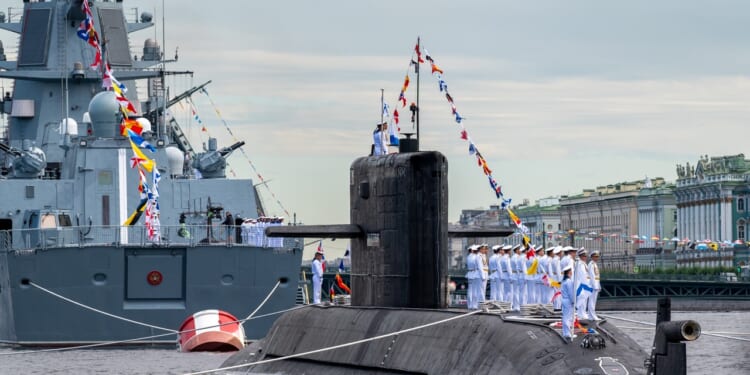“We’re hunting your submarines,” the British defence secretary said to Russian president Vladimir Putin.
British and German P-8A Poseidon maritime patrol aircraft are combing the cold waters of the Baltic and North Seas, searching for the unmistakable sound and shape of Russian submarines.
“We’re hunting your submarines”
In 2024, the United Kingdom and Germany signed a landmark defense cooperation agreement. As part of the agreement, the British military and German military are working together to detect and track Russian submarines.
German crews have joined British P-8A Poseidon maritime patrol aircraft flying from RAF Lossiemouth. Later in the year, the German Navy P-8A Poseidon will deploy to the UK. The sorties are part of NATO’s Operation Baltic Sentry and are designed to detect and track Russian submarines in the Baltic Sea and the North Sea. Moreover, the Royal Navy and German Navy will jointly purchase advanced Sting Ray torpedoes.
“We’re hunting your submarines,” British defence secretary John Healy said in a message to Russian president Vladimir Putin.
The threat of Russian submarines is real. Russia possesses one of the most advanced and largest submarine fleets in the world, with approximately 64 vessels, including nuclear-powered ballistic missile, attack, and cruise missile submarines. Most recently, a Russian submarine was spotted outside Toulon, one of the largest bases of the French Navy. And in the war in Ukraine, Russian submarines have been participating in the Kremlin’s long-range fires campaign, launching ballistic and cruise missiles against urban centers and critical infrastructure.
“This partnership is a cornerstone of European security, demonstrating unity and strength to our adversaries, and keeping us secure at home and strong abroad,” Healy added.
The “A” is the latest version of the P-8 Poseidon and can detect, identify, track, and defend against hostile ships and submarines.
The Irony of History
If one were to be transported back to 1914 or 1940 and tell a British or German defense official that the Royal Navy would be working together with the German Navy to hunt down submarines, the official would most likely laugh.
During both world wars, the German Navy tried its utmost to bring the UK to heel through unrestricted submarine warfare. Conversely, the Royal Navy deployed countless warships, men, and resources in combating the U-boat menace that threatened to starve Britain.
In the periods that the German Navy (or Kaiserliche Marine) conducted unrestricted submarine warfare in World War I, U-boats sank as much as 860,000 tons of Allied shipping a month. (For comparison, the USS Gerald R. Ford, the US Navy’s newest and most advanced supercarrier, has a displacement of around 100,000 tons.) In total, German U-boats sank approximately 5,000 Allied warships, commerce ships, and transport vessels.
During World War II, the German Navy (or Kriegsmarine by then) followed the same successful strategy of the previous world war. Berlin unleashed its submarines in the Atlantic Ocean with clear instructions to sink everything that came through their path. In their best months, U-boats sank as many as 700,000 tons of Allied shipping. They even tried to shoot down Allied aircraft. However, similar to the previous instance, the Allies prevailed through using the convoy system and simply putting more ships to sea than the Germans could sink.
Nevertheless, 80 years after the end of World War II, the Royal Navy and German Navy find themselves working together on anti-submarine warfare.
About the Author: Stavros Atlamazoglou
Stavros Atlamazoglou is a seasoned defense journalist specializing in special operations and a Hellenic Army veteran (national service with the 575th Marine Battalion and Army HQ). He holds a BA from the Johns Hopkins University and an MA from the Johns Hopkins’ School of Advanced International Studies (SAIS). His work has been featured in Business Insider, Sandboxx, and SOFREP.
Image: fifg / Shutterstock.com

















